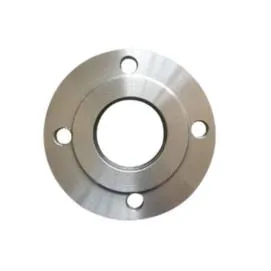-
Cangzhou Yulong Steel Co., Ltd.
-
Phone:
+86 13303177267 -
Email:
admin@ylsteelfittings.com
- English
- Arabic
- Italian
- Spanish
- Portuguese
- German
- kazakh
- Persian
- Greek
- French
- Russian
- Polish
- Thai
- Indonesian
- Vietnamese
- Zulu
- Korean
- Uzbek
- Hindi
- Serbian
- Malay
- Ukrainian
- Gujarati
- Haitian Creole
- hausa
- hawaiian
- Hebrew
- Miao
- Hungarian
- Icelandic
- igbo
- irish
- Japanese
- Javanese
- Kannada
- Khmer
- Rwandese
- Afrikaans
- Albanian
- Amharic
- Armenian
- Azerbaijani
- Basque
- Belarusian
- Bengali
- Bosnian
- Bulgarian
- Catalan
- Cebuano
- China
- China (Taiwan)
- Corsican
- Croatian
- Czech
- Danish
- Esperanto
- Estonian
- Finnish
- Frisian
- Galician
- Georgian
- Kurdish
- Kyrgyz
- Lao
- Latin
- Latvian
- Lithuanian
- Luxembourgish
- Macedonian
- Malgashi
- Malayalam
- Maltese
- Maori
- Marathi
- Mongolian
- Myanmar
- Nepali
- Norwegian
- Norwegian
- Occitan
- Pashto
- Dutch
- Punjabi
- Romanian
- Samoan
- Scottish Gaelic
- Sesotho
- Shona
- Sindhi
- Sinhala
- Slovak
- Slovenian
- Somali
- Sundanese
- Swahili
- Swedish
- Tagalog
- Tajik
- Tamil
- Tatar
- Telugu
- Turkish
- Turkmen
- Urdu
- Uighur
- Welsh
- Bantu
- Yiddish
- Yoruba

Dec . 12, 2024 03:50 Back to list
seamless and welded pipe
Understanding Seamless and Welded Pipes Differences, Applications, and Advantages
Pipes are an essential component in various industries, serving as conduits for transporting fluids, gases, and other materials. Among the primary types of pipes, seamless and welded pipes are frequently utilized. While they may appear similar at a glance, these two types of pipes exhibit significant differences in their manufacturing processes, structural integrity, and applications.
Manufacturing Processes
Seamless Pipes As the name suggests, seamless pipes are manufactured without any joints or welds. This is achieved through methods like extrusion or rotary piercing, where a solid round steel billet is heated and then shaped into a hollow tube. The absence of seams results in greater strength and reliability, making seamless pipes suitable for high-pressure applications.
Welded Pipes On the other hand, welded pipes start as flat sheets or strips of steel. These sheets are rolled into a cylindrical shape and then the edges are welded together, either by fusion or arc welding processes. While the welding process introduces a seam, modern welding techniques have significantly improved the strength and integrity of welded pipes. However, they may still be more susceptible to faults at the welded joints compared to their seamless counterparts.
Structural Integrity
The structural integrity of a pipe is critical, especially in industries like oil and gas, petrochemical, and construction. Seamless pipes are often preferred in high-pressure and temperature applications because they can withstand extreme conditions without the risk of failure that seams may introduce. The continuous material structure of seamless pipes makes them less prone to cracks and leaks.
In contrast, welded pipes can be more economical and easier to produce in large diameters. However, the quality of the weld and the material used play a crucial role in the overall strength of welded pipes. With advancements in technology, many welded pipes are manufactured to meet industry standards that ensure their durability and reliability.
Applications
Both seamless and welded pipes serve critical roles across various industries, but their applications often differ based on their properties.
seamless and welded pipe

Seamless Pipes These pipes are predominantly used in industries where safety and strength are paramount. For example, seamless pipes are often utilized in the transport of natural gas, oil, and other high-pressure fluids. The oil and gas industry, as well as power plants, favor seamless pipes due to their ability to withstand extreme conditions without failure. Furthermore, they are commonly found in applications involving high-temperature settings, such as nuclear power plants.
Welded Pipes Welded pipes are often used in less stringent applications where cost-effectiveness is a concern. They are often used in plumbing, water supply lines, and even in structural applications, such as scaffolding and fencing. The versatility of welded pipes makes them suitable for a broad range of uses, particularly in lower-pressure applications where the structural demands are less rigorous.
Advantages and Disadvantages
Advantages of Seamless Pipes 1. Superior strength and durability due to the lack of seams. 2. Enhanced resistance to pressure and temperature fluctuations. 3. Less likelihood of leaks or failures.
Disadvantages of Seamless Pipes 1. Generally more expensive due to complex manufacturing processes. 2. Limited availability in larger diameters compared to welded pipes.
Advantages of Welded Pipes 1. Economical and available in various sizes and wall thicknesses. 2. Easier to manufacture and customize for specific applications.
Disadvantages of Welded Pipes 1. Potential weaknesses at the welded joints. 2. Risk of defects if the welding process is not performed correctly.
Conclusion
In summary, both seamless and welded pipes have their unique strengths and applications. Choosing between them depends on various factors such as pressure requirements, cost constraints, and the specific environmental conditions they will face. Understanding the differences and characteristics of each type of pipe can assist engineers and industry professionals in making informed decisions that enhance safety and performance in their projects. Whether opting for the reliability of seamless pipes or the flexibility of welded pipes, it’s crucial to assess the needs of each application carefully.
Latest news
-
ANSI 150P SS304 SO FLANGE
NewsFeb.14,2025
-
ASTM A333GR6 STEEL PIPE
NewsJan.20,2025
-
ANSI B16.5 WELDING NECK FLANGE
NewsJan.15,2026
-
ANSI B16.5 SLIP-ON FLANGE
NewsApr.19,2024
-
SABS 1123 FLANGE
NewsJan.15,2025
-
DIN86044 PLATE FLANGE
NewsApr.19,2024
-
DIN2527 BLIND FLANGE
NewsApr.12,2024
-
JIS B2311 Butt-Welding Fittings LR/SR 45°/90° /180°Seamless/Weld
NewsApr.23,2024











